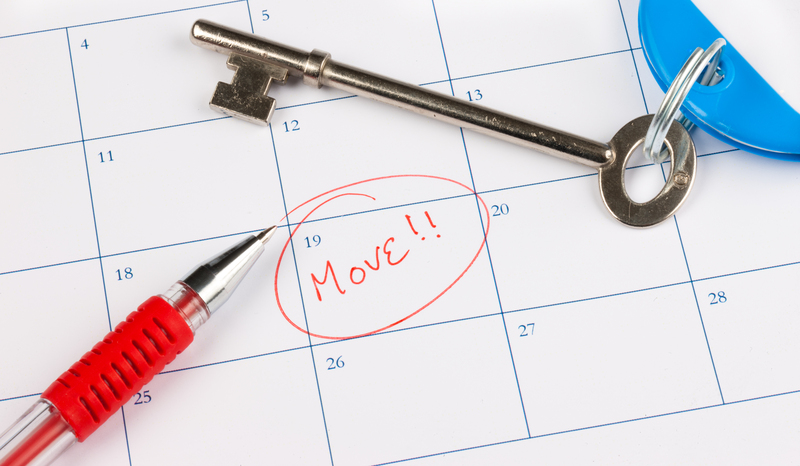Simplify Your Relocation by Mastering Decluttering Techniques
Posted on 29/05/2025
Simplify Your Relocation by Mastering Decluttering Techniques
Moving to a new home can open up exciting chapters in your life, but the process of relocation is often daunting. The key to transforming this overwhelming experience? Mastering decluttering techniques! By learning how to declutter before a move, you can significantly reduce stress, save money, and start fresh in your new space. In this in-depth guide, you'll discover a variety of decluttering strategies that will help you simplify your move--making the transition as smooth and efficient as possible.

Why Decluttering Is Crucial for a Stress-free Move
Before you start packing boxes, it's essential to understand the benefits of decluttering before relocation. Moving less stuff means you'll use fewer boxes, pay lower moving fees, and avoid the headache of organizing and storing unnecessary belongings in your new home. Some of the main advantages of decluttering for a move include:
- Saving Time and Energy: Less to pack, transport, and unpack means the entire process is faster and more efficient.
- Reducing Moving Costs: The fewer items you move, the cheaper your move will be, especially with professional movers who charge by weight or volume.
- Starting Fresh: A move is the perfect opportunity to curate your belongings for a clutter-free, organized home.
- Mental Clarity: Decluttering helps create a sense of control and reduces anxiety associated with moving.
Step-by-Step Guide to Master Decluttering Before Moving
Decluttering for relocation doesn't have to be overwhelming. Follow these comprehensive steps to tackle the process one area at a time and ensure you only bring what you truly need and love to your new home.
1. Develop a Decluttering Plan
Jumping into decluttering without a strategy can lead to frustration. Instead, create a plan:
- Set a timeline: Start decluttering at least a month before your move. Schedule sessions in your calendar to stay on track.
- Break it down by room: Tackle one area at a time, such as bedrooms, kitchen, or garage.
- Gather supplies: Get sturdy boxes or bags for donations, trash bins, and containers for items to keep.
2. Use Sorting Systems for Effective Decluttering
One of the most effective decluttering methods is the classic Four-Box Method:
- Keep: Items you use regularly or are meaningful.
- Donate/Sell: Things in good condition that you no longer need.
- Recycle: Items that can be recycled instead of thrown away.
- Trash: Broken or unusable items.
3. Begin with Easy Areas
Start in the least emotionally charged areas, like bathrooms or linen closets. These usually contain fewer sentimental items and can provide early wins that boost your momentum.
4. Ask the Right Questions
As you sort, ask yourself:
- Have I used this in the past year?
- Does this item bring me joy or serve a needed purpose?
- Will I need this in my new home or lifestyle?
- Is it worth the cost and effort to move this?
If you answer "no" to most of these, it's time to let go.
5. Declutter Sentimental Items with Care
Sentimental belongings, such as childhood mementos, photo albums, or heirlooms, can be the toughest to sort through. Here are some decluttering techniques for sentimental items:
- Limit yourself: Allocate a specific box or bin--the items must fit inside.
- Digitize memories: Scan photos or important papers to reduce physical clutter.
- Choose favorites: Keep only the most meaningful pieces.
6. Sell, Donate, or Dispose Responsibly
Once you've sorted, responsibly distribute your unwanted belongings:
- Sell: Use online marketplaces, garage sales, or consignment stores for valuable items.
- Donate: Local charities, thrift stores, or shelters often accept gently used items.
- Recycle: Electronics, paper, or plastics can often be recycled.
- Dispose: Safely discard anything that is broken, expired, or unusable.
Room-by-Room Decluttering Strategies for Moving Made Easy
Successful decluttering for relocation means customizing your approach for each space in your home. Here's a breakdown of room-specific tips:
Decluttering the Kitchen
- Check expiration dates: Toss expired or stale foods and spices.
- Duplicate kitchenware: Keep only one of each essential item; donate extras.
- Unused gadgets: If you haven't used an appliance in a year, consider letting it go.
Streamlining Your Wardrobe
- Try the reverse hanger method: Hang all clothing with hangers facing backward--after you wear an item, face the hanger forward. After a season, donate what remains unworn.
- Let go of "someday" clothes: If it doesn't fit, suit your style, or hasn't been worn in over a year, declutter it.
Pare Down Books and Paperwork
- Donate novels: Give books you won't reread to libraries or charities.
- Digitize paperwork: Scan important documents and recycle unnecessary papers.
- Keep only what's essential: Important records, manuals, and references.
Organizing Children's Rooms and Play Areas
- Work together: Involve children in deciding what toys, clothes, and books to keep.
- Donate gently used items: Teach generosity by donating unused items.
Clearing Out the Garage and Storage Areas
- Sort seasonal items: Only keep decorations or sports gear you actually use.
- Downsize tools: Eliminate duplicates or worn-out tools.
- Dispose of hazardous waste: Follow local guidelines for paint, chemicals, and batteries.
Smart Packing and Moving After Decluttering
After thorough decluttering, you're ready to simplify your relocation by packing smart:
- Label everything: Clearly mark boxes with contents and destination rooms.
- Pack by category: Group similar items to make unpacking easier.
- Keep essentials separate: Pack a "first night" box with toiletries, medications, and other necessities.
- Use quality materials: Invest in sturdy boxes, packing tape, and bubble wrap for fragile items.
Tips to Maintain a Clutter-Free Home Post-Move
Mastering decluttering techniques for moving is only the beginning. To enjoy your new, organized space, embrace habits that prevent clutter from reaccumulating:
- Practice the "one in, one out" rule: For every new item you bring in, let one go.
- Schedule regular decluttering sessions: Once every few months, revisit your belongings and weed out excess.
- Be intentional with new purchases: Only buy what you truly need and love.
Minimalism: The Ultimate Decluttering Mindset
Minimalism encourages you to live with less and prioritize quality over quantity--a philosophy that can transform your home and lifestyle. Embracing minimalism in your new space helps you maintain order, reduce cleaning time, and enjoy greater peace of mind.

FAQs about Decluttering for Relocation
How early should I start decluttering before a move?
It's best to begin the decluttering process at least 4-6 weeks before your moving date. This gives you time to tackle each room and make thoughtful decisions without rushing.
What if I'm short on time?
- Focus on high-impact areas: Prioritize decluttering closets, the kitchen, and the garage where unused items often accumulate.
- Enlist help: Family members, friends, or professional organizers can speed up the process.
Are there services that can help with decluttering?
Yes! Professional organizers or specialized decluttering services can guide you through the process, especially if you're feeling overwhelmed.
Should I declutter before or after packing?
Always declutter before you start packing. This ensures you only box up what you intend to keep, saving time and moving expenses.
Conclusion: Move Smarter by Mastering Decluttering Techniques
Whether you're moving across town or to a new country, decluttering before your relocation is the cornerstone of a successful, streamlined move. By following the techniques discussed--planning, sorting, room-by-room approaches, and responsible disposing--you'll reduce stress and save money, all while paving the way for a fresh start in your new space.
Mastering decluttering for relocation is more than a moving strategy--it's a lifelong skill that leads to a simpler, more organized lifestyle. Start today, and make your next move your easiest yet!





